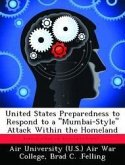On June 8th, 1967, in the midst of the Six-Day War, the state of Israel attacked and nearly sunk the USS LIBERTY (AGTR-5) while LIBERTY was patrolling north of the Sinai Peninsula. The U.S. reaction to the attack was to accept the Israeli explanation without really believing it, and to avoid a confrontation with the only democracy in the Middle East. This research paper uses a case study methodology to delve into the details of the attack and the foreign policy considerations surrounding it. The research shows that significant U.S. options were ignored in the reaction to the attack of the LIBERTY. The result has been a huge injustice to the men of the LIBERTY, who continue to struggle to make their case known. It is probable that only a full congressional inquiry into this incident will resolve the questions surrounding the attack of the LIBERTY. Although beyond the scope of this paper, there is a need for follow-on research regarding the structure of the various Israeli explanations of the attack compared with the availability of U.S. public data regarding the incident. The hypothesis would be that Israeli explanations of the attack were more likely to change to accommodate and include new information on the incident, as it became available in the U.S. The purpose of the follow-on project would be to determine if explanations were created to explain the incident as accidental, yet still include enough real details to retain semblance of credibility. It would be expected that a positive correlation of explanations to timing of new public information regarding the LIBERTY would help confirm the hypothesis and show an Israeli deception and disinformation effort to obscure the facts surrounding the attack on the LIBERTY.








